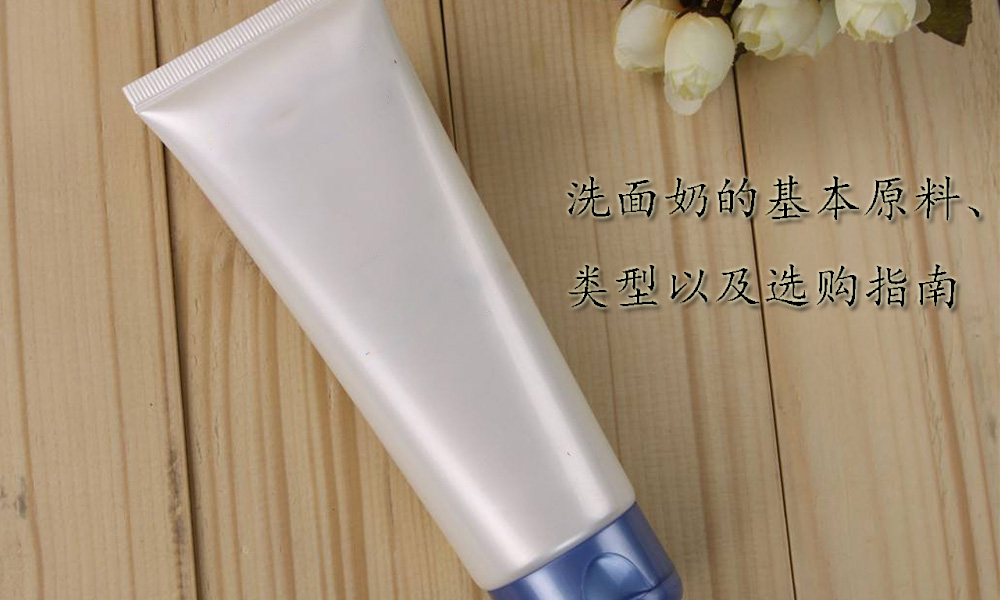
Facial cleanser is currently the most sold lotion in the skin cleansing market A cleansing product that can cleanse facial dirt and remove makeup.
The following is a detailed introduction to the basic raw materials, types and purchasing guide of facial cleanser:
1. Basic raw materials of facial cleanser
There are many raw materials in facial cleanser. The functions are different. The main raw materials of facial cleanser are oily ingredients, surfactants, moisturizers and others.
1. Oily ingredients include: white oil, isopropyl myristate, isopropyl palmitate, lanolin derivatives, cetyl alcohol , stearyl alcohol.
2. Surfactant ingredients include: sodium lauryl sulfate, triethanolamine lauryl sulfate, fatty acid soap, Tween 20, Tween 80, Betaine, etc.
3. Moisturizer ingredients include: glycerin, sorbitol, sodium pyroglutamate, polyethylene glycol, and propylene glycol; others include: antioxidants , flavors, preservatives, thickeners, deionized water, nutrients, etc.
2. Types of facial cleansers
1. Foam facial cleanser:
Contains surfactants and is divided into two types: multi-foam type and micro-foam type. Surfactants are used to stabilize grease in water and dissolve in water to achieve a cleaning effect.
Soap facial cleansers are also one of them, but because of their obvious characteristics, they are generally treated differently from ordinary surfactant facial cleansers.
2. Solvent-based facial cleanser:
This type of product relies on oil and The solubility of oil is used to remove oily dirt. It mainly targets oily dirt, so it is usually some makeup remover oil, cleansing cream, etc.
3. Non-foaming facial cleanser:
This type of product combines the above The characteristics of both types are that they use an appropriate amount of oil and contain some surfactants.
4. Collagen facial cleanser:
Collagen facial cleanser is soap-free. The base formula is moist and comfortable, and can effectively remove facial cuticles and dirt including melanin, restoring the skin to a transparent and refreshing state. The nano-collagen component in the product quickly penetrates into the skin and promotes skin metabolism. It also adds a layer of protective barrier to the face, preventing the loss of facial epidermal water and the massive penetration of external pollutants, thus protecting the delicate skin. The skin is protected from harmful factors.
Three, choose facial cleanser according to your skin
1. Oily skin:
Because the skin of oily skin secretes more oil than the average person, it is necessary to choose some products with strong cleaning capabilities. Usually some soap products need to be selected. Because soap products have strong degreasing power and are easy to rinse off, your skin feels very refreshed after washing. Oily skin is suitable for moisturizing and refreshing facial cleansers, preferably those with plant-derived ingredients.
2. Mixed skin:
This type of skin mainly has T-shaped skin. Oily, while the cheek area is generally neutral, and some may be dry. This kind of skin needs to strike a balance between the T-zone and the cheek area. You can’t just consider cleaning the T-zone and choose some products with strong fat removal power, especially in autumn and winter.
3. Neutral skin:
This type of skin is the easiest to care for . Generally, just choose some foaming facial cleanser. Of course, if you feel your skin is dry in autumn and winter, you can also use some non-foaming facial cleanser. Because some non-foaming facial cleansers are not as difficult to rinse off as before after improvement, and they do not feel very greasy after washing.
4. Dry skin:
It is best not to use foam for this type of skin facial cleanser. You can use some cleansing oil, cleansing cream or non-foaming facial cleanser. Cleansing oil products are found in some mid-to-high-end products because they have a refreshing skin feel compared to cleansing creams.
5. Sensitive skin:
For those with allergic skin, it is recommended to use Bisabolol anti-allergic facial cleanser and amino acid facial cleanser are also good choices. Facial cleansers with excessive foam often contain more anionic surfactants, are more alkaline, have a higher pH value, and are more irritating, so they should not be used.

 微信扫一扫打赏
微信扫一扫打赏

